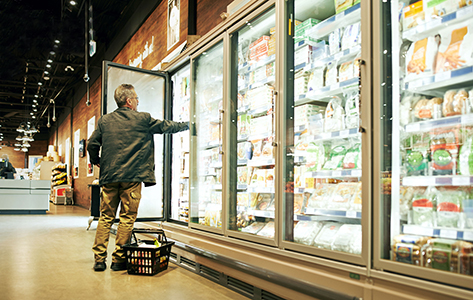Eight years ago, the government passed FSMA. As a manufacturer, training new and existing employees to remain compliant with legislation is paramount. The goal isn’t to make life harder for business owners—it’s to protect American consumers from unsafe food handling and transportation practices.
The following are five tips to help warehouse managers train employees while maintaining FSMA compliance.
Understand FSMA Final Rules
It’s essential for everyone in the facility, from the CEO to the newest hire, to understand the FSMA rules. According to current Good Manufacturing Practices (cGMP), everyone who works in manufacturing, processing or packaging of food is required to train in food hygiene and safety. Managers can offer training in one of two ways—through on the job experience or via an FSMA-accredited classroom curriculum.
For individuals with specialized jobs, such as quality auditors or preventative controls qualified individuals (PCQI), the training option that allows compliance with FSMA rules is an accredited curriculum.
Utilize Warehouse Management Systems
FSMA gives the FDA authority to issue mandatory recalls for any food products if deemed necessary. To meet FSMA standards, record keeping and lot tracking is a necessity. If a product type is linked to a disease outbreak, the FDA wants to know where each product in that lot is within 24 hours. Having the ability to track and trace 100% of the products ensures that the company is FSMA compliant.
A warehouse management system (WMS) can track products, but only if you train employees in its use. While the average employee won’t be responsible for tracing a production lot in the event of a recall, each worker needs to know how to enter data into the system correctly, and how to retrieve the information if necessary. Include training in your WMS to ensure compliance.
Warehouse management systems, when paired with IoT sensors, can prevent recalls and ensure compliance by monitoring temperature fluctuations in climate-controlled areas. According to the Department of Agriculture, frozen food stored at temperatures at or below -0.4° F is always safe. A comprehensive WMS can monitor the temperature inside a facility’s freezers and alert workers or management if there are dramatic fluctuations that may result in a recall.
Seek Out Alliances
Warehouse managers are not alone when it comes to creating a compliant workplace. The FDA has established and funded three alliances—Produce Safety, Food Safety Preventative Controls, and Sprout Safety—each with their own standardized curriculum designed to help those who fall under FSMA rules.These alliances work for the majority of those in the food production industry, though they may not work for everyone.
Seek out the applicable food safety alliance and see if their training curriculums apply to your facility. Even if they don’t fit directly, these alliances can give managers an excellent place to start creating their training curriculum.
Create a Culture of Compliance
FSMA isn’t designed to make life harder for warehouse managers. Its goal is to keep people safe when buying their weekly groceries. Don’t just focus on training to meet FSMA standards. Instead, create a culture of compliance throughout the facility. Make FSMA everyone’s responsibility, and make it easier for employees to communicate with management if they notice a problem that normal channels don’t address.
As part of this culture of compliance, create incentives that reward employees for reporting problems, maintaining compliance levels and completing accredited training. Sometimes incentives can be the best way to motivate employees, whether you’re offering money, paid vacation or other benefits. Walk employees through the process of how to spot a problem and report it to management.
Continue Education Throughout Employment
FSMA compliance training isn’t something you should restrict to an employee’s onboarding. It’s something you should continue throughout their time at your facility. Make FSMA education a priority for every worker in your facility. While you want to start their training with onboarding, it shouldn’t stop there. Offer new training courses once a month or every three months—as often as you’d like without compromising productivity.
As the day-to-day grind continues, most workers forget about rules and regulations. Continuing education ensures FSMA compliance is at the forefront of everyone’s mind throughout their careers. Continuing your employee’s education is also shown to increase loyalty and reduce turnover, keeping things running smoothly and preventing warehouse managers from training new workers every quarter.
Looking Forward
The FDA oversees food safety and can issue a recall when a problem occurs. Yes, as a whole, it’s the responsibility of every single person working in the food production industry—from the highest-paid CEO to the newest employee on the production floor—to maintain compliance. It’s not enough to review guidelines with new employees during onboarding.
Training is essential to ensure everyone in a facility maintains the rules laid down by FSMA. Seek out assistance in the form of the FDA-funded alliances, continue employee education and make it a point to create a culture of compliance from the moment employees walk through the door. Offer continuous training opportunities and you’ll never have to worry about breaking FSMA rules.





















